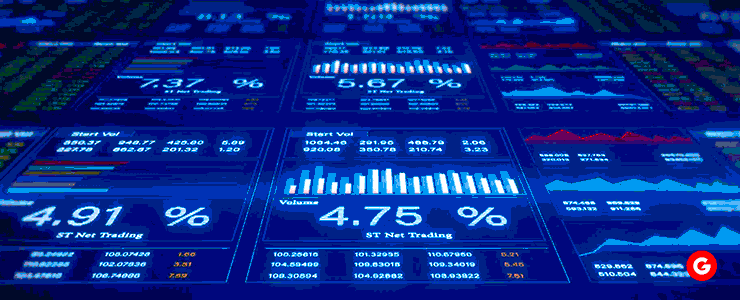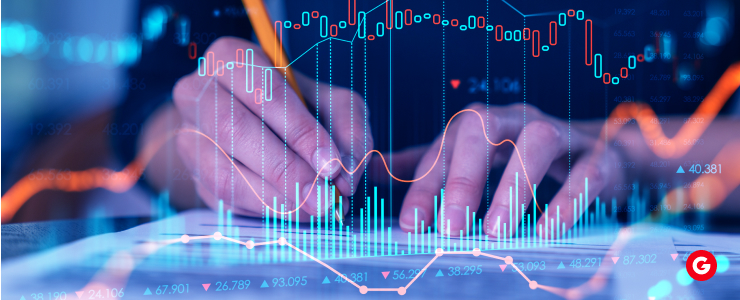CFD, or Contracts For Difference, is an agreement between traders and brokers in which the difference between the opening and closing trade is paid in cash. CFDs are very popular in the Forex market. CFD trading is more complex in volatile markets and requires the application of better-equipped strategies and risk management.
CFD Trading has been deemed a precarious investment. Experienced traders usually handle it with a much higher risk tolerance and diversified portfolio.
Market Volatility and CFD Trading
Market Volatility can be defined as a dynamic movement of price within the market. Volatility changes over time due to the impacts of investors’ risk appetites, economic and geopolitical factors, and narratives about specific sectors. While volatility often implies the unpredictability of the market, it also provides traders with equal amounts of risks and opportunities for profit.
CFD Trading is no exception to the wide-ranging impacts of volatility, some of which have been listed here:
- Increased Trading opportunity: CFDs allow traders to make profits in falling and rising markets, but volatility has its hazards, too.
- Changing Margin Requirements: Traders often increase the margin requirements to reduce risk.
- Slippage: Usually occurs in highly volatile markets and may cause the planned outcomes to deviate.
CFD Trading Strategies For Volatile Markets
A specified roadmap and efficient strategies are the proficient way to navigate Market volatility.
CFD trading strategies also include market updates, liquidity, and the skill to profit in both downward and upward markets.
Some of these strategies have been listed below for you:
1. Scalping
Scalping is a CFD trading strategy in which a trader buys and sells one stock multiple times throughout the day. Due to its simplicity and popularity, traders or people specializing in scalping, called scalpers, look for highly volatile markets and aim to make smaller profits instead of more.
Thanks to its fast operations and advanced trade indicators, the MT4 Trading platform allows traders to execute trades at high speed during price uprises.
2. Trend Following
Market nature fluctuates, but despite these movements, trends persist, and traders focus on the directional flow and whether it continues moving in that direction. Traders must wait for a trend to emerge and establish. There are various sub-strategies in the Trend following strategy, some of which are as follows:
- Chart patterns
- Moving averages
- Trendlines
- Pivot point following
FXGiants offers numerous tools that can help traders recognize and follow trends. The key to a successful trend-following strategy is to keep a keen eye on the market’s general direction and not react to minor variations.

3. Hedging
Hedging is an investment to reduce losses, much like a backup trading plan. Traders invest a part of their capital in a safer and more stable direction so that if they incur a loss in their initial and more volatile market investment, their more stable investment will recover, if not all, at least a part of their losses.
Hedging does not make money but reduces the impact of losses. For instance, if a trader is expecting a specific decrease, they can open a short position in the CFD market to lessen the effects of possible losses.
FXGiants provides access to a wide range of markets, and traders can reduce their losses and maintain capital even during sporadic market conditions by using hedging strategies during volatile periods.
4. Breakout Trading
Breakout Trading is a strategy traders use to anticipate when a price ‘breaks out.’’ They wait to see whether a price will go up or down, and they make their move accordingly.
Volatility can create significant breakouts, exposing traders to profitable opportunities in CFD trading. Using tools like FXGiants, traders can quickly enter trades when a breakout occurs and gain profits.
5. CFD position trading
CFD position trading involves speculating whether the price of an asset increases or decreases, but the trader does not own the assets. If the trader expects the price to rise, he may take a “long” position, but if the prices are expected to fall, he may take a “short” position.
Based on these predictions and the difference between the trader’s entry and exit points, it might incur profits or losses depending on whether the market moves in the trader’s favor.
Position trading is primarily used in a volatile market due to the opportunity for both increased profits and losses.
CFD Trading Regulations in the US
CFD Trading in the US is illegal because traditional financial institutes cannot regulate it and avoid the high potential of associated loss. Because of this, people in the US invest in offshore non-American companies, but this leaves room for scams. Because it is an unregulated trade, legal institutions would not intervene in the case of fraud.
After the 2008 stock market crash, caused by a lack of proper market regulation, the SEC, or Securities and Exchange Commission, also known as the Dodd-Frank Act, was established to prevent American nationals from making more money than they had and experiencing the high risk associated with CFD trading.

Conclusion
CFD Trading in a volatile market has benefits and potential for profit, but it is a double-edged sword due to the equal risk involved. A trader must have a proficient strategy, a reasonable risk tolerance, and control his emotions not to be impacted by the undulations of the forex market.
In a volatile market, experience, discipline, and choosing the right tools and platforms, like FXGiants and MetaTrader 4, which provide the necessary features and assistance to make the right move at the right time, are crucial to maximizing profit and helping traders strive to thrive even in unforeseeable market conditions.
FAQs
Is CFD trading safe?
CFD trading has its upsides and downsides. Since it is based on market movements, sharp market turns can result in immense losses or profits.
What is volatility?
Market volatility is the pace at which price changes within a short time frame. The higher the volatility, the higher the risk associated.
What causes high volatility?
Multiple factors can influence market volatility, such as News, Investor sentiments, geopolitical events, natural disasters, supply and demand, unprecedented events like companies going bankrupt, and technological advancements, which may cause market disruptions.
DISCLAIMER: This information is not considered investment advice or an investment recommendation, but is instead a marketing communication
